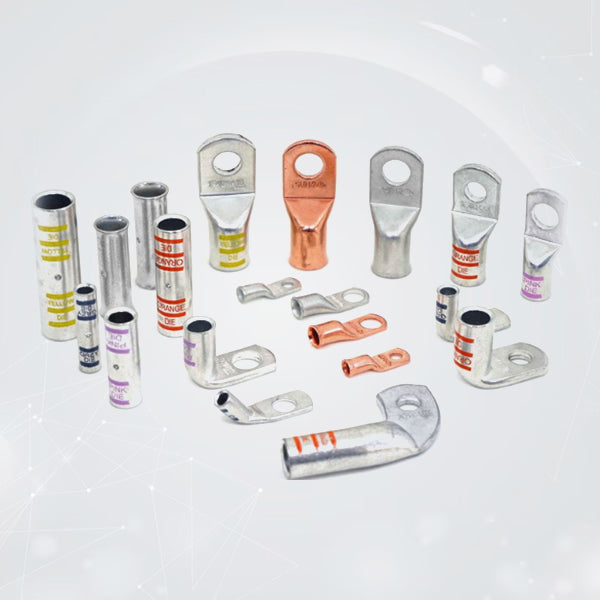
Choosing the Right 1 AWG Lugs for Solar Panel Installations
The transition to sustainable energy solutions has placed solar panel installations at the forefront of modern power systems. The efficiency and reliability of these systems are heavily reliant on the quality of their components, with 1 awg lugs playing a crucial role in ensuring effective power transfer and minimizing energy loss. Selecting the appropriate 1 awg lug is not just a minor detail; it's an essential decision that directly impacts the performance and longevity of solar arrays. This guide provides an in-depth look at the factors to consider when choosing 1 awg battery cable connections for solar applications, ensuring that your solar system operates at its peak potential.
The Importance of 1 AWG Lugs in Solar Systems
Solar installations involve the intricate transfer of electrical energy generated by solar panels to various components, including charge controllers, inverters, and battery banks. 1 awg lugs are specifically designed to handle the moderate to high current flows that are typical in these systems. Their size and conductivity are optimized to minimize resistance, a critical factor in preventing power loss and heat buildup. In solar applications, where efficiency is paramount, the choice of lug can significantly impact the overall energy yield of the system. A well-chosen 1 awg lug ensures that the electrical energy is transferred smoothly and efficiently, maximizing the amount of power available for use.
Key Benefits of Using 1 AWG Lugs in Solar Applications
- Efficient Power Transfer: 1 awg lugs are engineered to provide a low-resistance connection, ensuring that the electrical energy generated by solar panels is transferred efficiently. This efficiency translates to higher overall system performance and reduced energy waste, maximizing the return on investment for the solar installation.
- Optimal Compatibility: The dimensions of 1 awg cable lug are well-suited to the cable diameters commonly used in solar installations. This compatibility minimizes the risk of mismatch issues, which can lead to poor connections and reduced efficiency. Using the correct lug size ensures that the connection is secure and that the current flows smoothly.
- Enhanced Longevity: Solar systems are often exposed to harsh environmental conditions, including temperature fluctuations, moisture, and UV radiation. 1 awg lugs, when properly installed, maintain a secure and stable connection, ensuring consistent performance over the long term. The durability of these lugs is crucial for minimizing maintenance and ensuring the reliable operation of the solar system.
- Reliability: In solar applications, reliability is paramount. 1 awg lugs provide a dependable connection that minimizes the risk of electrical failures, which can be costly and disruptive. A reliable connection ensures that the solar system operates consistently, providing a steady source of clean energy.
Factors to Consider When Choosing 1 AWG Lugs for Solar Panels
- Material Compatibility: Ensure that the 1 awg lug material is compatible with the materials of the cables and other components in the solar system. This compatibility prevents galvanic corrosion, a process that can degrade the connection over time. Galvanic corrosion occurs when dissimilar metals are in contact in the presence of an electrolyte, such as moisture.
- Corrosion Resistance: Given the outdoor exposure of solar installations, choose 1 awg lugs that offer excellent corrosion resistance. Tinned copper lugs are a popular option, as the tin coating provides an additional layer of protection against oxidation and other forms of corrosion. This is particularly important in coastal or high-humidity environments.
- Current Carrying Capacity: Select 1 awg copper lug that can handle the maximum current expected in the solar system. This ensures that the lugs can operate safely without overheating, which can lead to connection failures and potential fire hazards. The current carrying capacity of the lug should be rated to exceed the maximum current that the solar panels will produce.
- Installation Requirements: Consider the specific installation requirements of your solar system. Some 1 awg lugs are designed for crimping, a process that uses a specialized tool to compress the lug around the cable, while others may require soldering or mechanical fastening. Choose the installation method that is most appropriate for your application and skill level.
- Certification and Standards: Ensure that the 1 guage lugs meet relevant industry standards and certifications. This guarantees that the lugs have been tested and approved for use in solar applications, providing an added level of assurance regarding their quality and safety.
Installation Best Practices
- Cable Preparation: Strip the insulation from the cable to the precise length recommended for the 1 awg lug, typically around 3/4" or 19–20 mm. Clean the cable to remove any contaminants that could hinder the connection. This ensures that the lug makes good contact with the conductor.
- Lug Crimping: Use a dedicated crimping tool designed for 1 awg lugs. Apply firm, even pressure to create a secure and gas-tight connection. A proper crimp ensures that the lug and cable are essentially fused together, providing a low-resistance connection.
- Connection Inspection: After installation, inspect the connection to ensure it is properly crimped and free from any damage. Perform a pull test to verify the mechanical strength of the connection. This ensures that the connection can withstand the stresses of the environment.
- Environmental Protection: If necessary, use heat shrink tubing or other protective materials to shield the connection from moisture and other environmental factors. This is particularly important in outdoor applications where the connection may be exposed to rain, snow, or humidity.
Technical Details Recap
- Cable Gauge: 1 AWG
- Strip Length: Approximately 3/4" (19–20 mm)
- Recommended Tool: Heavy-duty crimper designed for 1 AWG
- Typical Current Range: 70–150A (depending on system design)
Conclusion
Choosing the right 1 gauge copper lug is crucial for optimizing the performance, reliability, and longevity of solar panel installations. By carefully considering the factors outlined in this guide and adhering to best practices for installation, you can ensure that your solar system operates efficiently and safely for many years to come. A well-designed and properly installed electrical connection is the foundation of a successful solar energy system.

